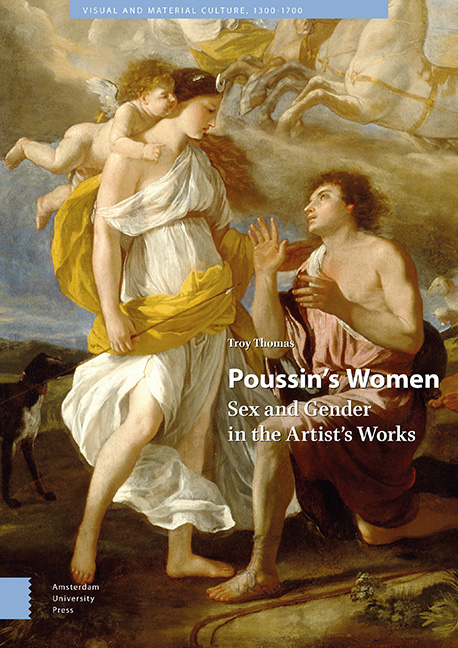Book contents
- Frontmatter
- Contents
- List of Illustrations
- Acknowledgments
- Part I – Violence and Virtue in Poussin’s Representations of Women
- Part II – Poussin’s Women—Cultural and Social Frames
- Part III – Paintings and Drawings
- 1 Predators
- 2 The Lustful—Triumphant, Impulsive, Spying, Conquered
- 3 Lovers—Genuine, Controlling, Unrequited, Jealous
- 4 Killers, Transgressors
- 5 Victims I—Killed, Assaulted
- 6 Victims II—Voiceless, Deceived
- 7 Heroines, Great Ladies
- Conclusion
- Bibliography
- Index
- Frontmatter
- Contents
- List of Illustrations
- Acknowledgments
- Part I – Violence and Virtue in Poussin’s Representations of Women
- Part II – Poussin’s Women—Cultural and Social Frames
- Part III – Paintings and Drawings
- 1 Predators
- 2 The Lustful—Triumphant, Impulsive, Spying, Conquered
- 3 Lovers—Genuine, Controlling, Unrequited, Jealous
- 4 Killers, Transgressors
- 5 Victims I—Killed, Assaulted
- 6 Victims II—Voiceless, Deceived
- 7 Heroines, Great Ladies
- Conclusion
- Bibliography
- Index
Summary
Abstract
Females both impose and endure human suffering more than males in Poussin's works, indicating both vengeance and victimhood as womanly characteristics. Some of Poussin's women are evil or destructive; others are victimized, heroic, or virtuous. He shows women as lovers, as jealous and duplicitous, as killers, but also as the gateway to redemption. He was aware of the injustices often imposed by men upon women, and urges his viewers to meditate on the unfairness of their victimhood. His purpose, as he said himself, is to encourage his viewers to think deeply about the moral implications of the subjects that he paints, no matter how harsh or noble they might be.
Keywords: Destructiveness, Suffering, Submissiveness, Heroines, Nobility, Virtue
A survey of Poussin's representations of women makes it clear that he does not, as is often inaccurately affirmed even today, depict ‘the best aspects of ancient, pagan civilization [in] a coherent whole in art’. The beauty of his paintings, his deployment of their colors, boldly or delicately orchestrated as required, his carefully coordinated figures, spun out in rigorous yet lovely compositional structures, beguile us into imagining that his subjects, like his pictorial constructions, are broadly uplifting. In the face of his pictures’ attractiveness, we have to remind ourselves that his subjects are so often destructive. In his presentation of scenes of rape, war, injustice, and revenge, Poussin aims chiefly to present dramatic narratives that engage the viewer in thoughtful reflection on human conflict. He wrote to Chantelou in 1648 that he would like to illustrate ‘the most distressing tricks of Fortune ever inflicted on man’. These paintings, Poussin said, ‘would remind people of the moral strength and wisdom they must develop in order to be able to remain steadfast and resolute in the face of the very worst which that blind madwoman can do to them’. He never made these pictures, but many of his finished works easily could be imagined as part of such a series, canvases in which protagonists are tested by the ill will of others (as is the good mother in the Judgment of Solomon—Fig. 6.8) or by the forces of nature (as are both lovers in Pyramus and Thisbe—Figs. 5.4, 5.5).
- Type
- Chapter
- Information
- Poussin's WomenSex and Gender in the Artist's Works, pp. 341 - 354Publisher: Amsterdam University PressPrint publication year: 2020

